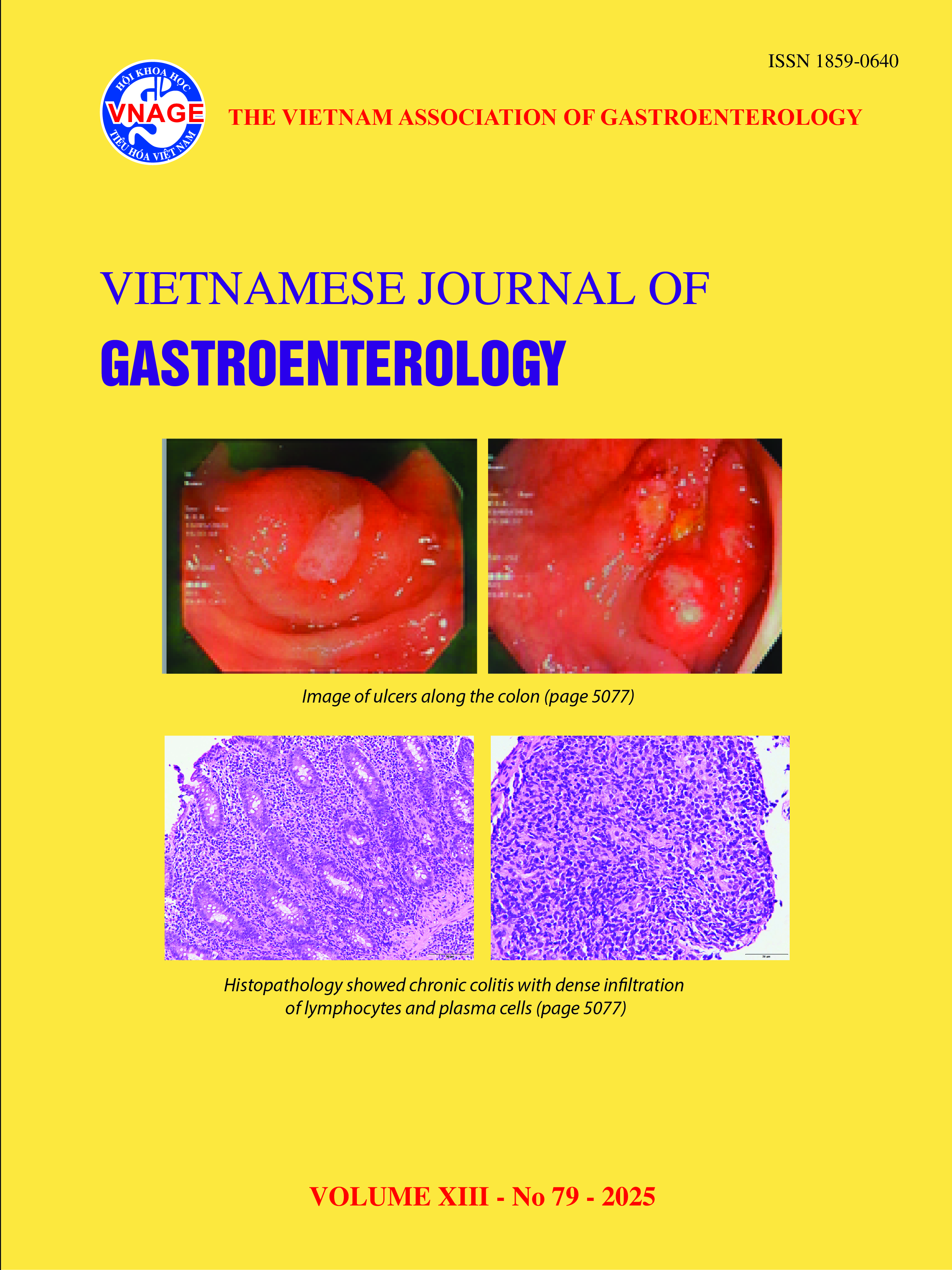Evaluation of outcomes of totally extraperitoneal laparoscopic repair using 2D and 3D mesh in the treatment of direct inguinal hernia
DOI:
https://doi.org/10.63583/r8frwx65Từ khóa:
Direct inguinal hernia, totally extraperitoneal laparoscopic repair, synthetic meshTóm tắt
Objective: To investigate certain clinical and paraclinical characteristics of patients with direct inguinal hernia and to evaluate long-term outcomes after totally extraperitoneal laparoscopic hernia repair combined with either 3D or 2D mesh prosthesis. Subject and method: A cross-sectional descriptive study combined with a prospective, uncontrolled interventional design was conducted on 69 male patients with 76 hernia sacs, who underwent elective surgery using the totally extraperitoneal (TEP) approach with either a 3D anatomically contoured mesh or a flat 2D mesh, from January 2019 to December 2024. Result: The study involved 69 male patients with direct inguinal hernia, with a mean age of 61.5 ± 13.1 years. Most patients were admitted due to a groin bulge (91.3%), typically appearing during ambulation or exertion (93.4%). According to the Nyhus classification, type IIIA was predominant (63.2%). The mean operative time was 59.2 ± 18.6 minutes for unilateral and 105.3 ± 30.1 minutes for bilateral hernias. The 3D mesh group had significantly shorter operative and mesh placement times than the 2D mesh group. The overall intraoperative and early postoperative complication rate was 18.8%, with peritoneal tears being the most common (8.7%). Early postoperative outcomes were rated as “good” in 89.9% of cases, higher in the 3D mesh group (94.3%) than in the 2D mesh group (85.3%). Conclusion: Totally extraperitoneal laparoscopic repair using 3D mesh for direct inguinal hernia demonstrated superior outcomes compared to 2D mesh, with shorter operative time, fewer complications, and better early postoperative results.
Tài liệu tham khảo
1. Kim A.Y., Choi S.I., Yeom J.H. (2021). Short-term comparative study of three-dimensional and two-dimensional laparoscopic surgery for total extraperitoneal primary inguinal hernia repair. Journal of Minimally Invasive Surgery, 24(2), 98-103.
2. Fujishima H., Sasaki A., Takeuchi Y. et al (2015). Laparoscopic treatment for inguinal hernia combined with cryptorchidism: Totally extraperitoneal repair with orchiectomy under the same operative view. International Journal of Surgery Case Reports, 17, 79–81.
3. Mir I.S., Nafae A.A., Malyar A.A. et al. (2015). An Experience of Short-Term Results of Laparoscopic Inguinal Hernioplasty Using 3D Mesh in a Developing Country. International Journal of Clinical Medicine, 6(1), 64-69.
4. Bagul D.A., Narwade D.N., Mota D.P. et al. (2019). Comparative efficacy between open 3d mesh and conventional mesh in patients of inguinal hernia. Int J Surg Sci, 3(1), 09-11.
5. Bracale U., Melillo P., Pignata G. et al (2012). Which is the best laparoscopic approach for inguinal hernia repair: TEP or TAPP? A systematic review of the literature with a network meta-analysis. Surg Endosc, 26(12), 3355–3366.
6. Burcharth J., Pedersen M., Bisgaard T. et al (2013). Nationwide Prevalence of Groin Hernia Repair. PLOS ONE, 8(1), e54367.
7. Banshodani M., Kawanishi H., Moriishi M. et al (2016). Inguinal hernia in hemodialysis versus peritoneal dialysis patients: a case-control study. Renal Replacement Therapy, 2(1), 24.
8. Brandt-Kerkhof A., van Mierlo M., Schep N. et al (2011). Follow-up period of 13 years after endoscopic total extraperitoneal repair of inguinal hernias: a cohort study. Surg Endosc, 25(5), 1624–1629.
9. Koppatz H.E., Harju J.I., Sirén J.E. et al (2020). Three-dimensional versus two-dimensional high-definition laparoscopy in transabdominal preperitoneal inguinal hernia repair: a prospective randomized controlled study. Surg Endosc, 34(11), 4857–4865.
10. Zhu X.-J., Jiao J.-Y., Xue H.-M. et al (2024). Single-incision laparoscopic transabdominal preperitoneal repair in the treatment of adult female patients with inguinal hernia. World Journal of Gastrointestinal Surgery, 16(1), 49–58.









